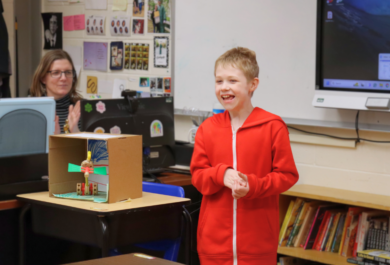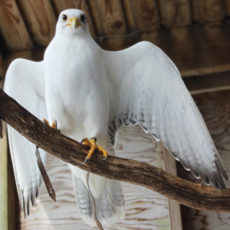Announcements

There are over 300 farm animals, horses and unreleasable wildlife in our Farm & Wildlife Center. The main criteria for animals in our program are that they play a supportive role with the children. Domesticated animals, such as sheep, goats, chickens, dogs and other animals that are accustomed to living with people, make up the majority of animal residents. These are the animals that provide close contact with the children. Non-domesticated species such as eagles, hawks and owls live in the rehabilitation center. The children do not handle the owls and eagles in the same way they work with the farm animals and dogs. What You Can See At The Farm
Most Green Chimneys School students arrive at the farm during their first days with their social worker, class or dorm staff. They soon “pick out” a favorite animal quite naturally. We arrange for the child to work with that animal and form a bond. But all the animals are shared by everyone and they all are to be taken care of by us. Each child must reach out and build a relationship with a human and with their peers at the farm. The desire to care for their animal dictates that they learn about that animal from others. The trust and friendships established because of the animal’s needs and the child’s desire to nurture the animal are often the basis for our therapeutic treatment. The animal acts as a bridge from the child to the staff and peers. No child is ever forced to interact and the interest must come from the child.
Animal welfare is at the core of the Green Chimneys mission and great lengths are taken so each animal receives the utmost nutrition, housing and veterinary care. Our animals are partners, here for students and staff to interact with in a respectful manner. Behavioral enrichment is offered when needed and the staff is vigilant in ensuring that the animals benefit as much from their interactions with people as the children do. Experience has shown that the best way to prevent stress in therapy animals at the farm is to not ask too much of each animal in the first place. Prevention of stress is the key. Regular breaks, rest periods, play time with other animals, and frequent evaluation of the animals helps the staff and interns to make sure every horse, goat and pig continues to flourish in the program.
The Farm & Wildlife Center is open to the public on weekends, free of charge, for self-guided visits. Public hours are Saturdays & Sundays from 10am to 3pm. Plan your visit
Be sure to check the Events webpage for info on additional happenings.
Families of Green Chimneys students should follow procedures outlined by the school.
Green Chimneys welcomes academics, practitioners, and clinical and professional groups from around the world. Please schedule a visit to The Institute regarding the nature of your visit/area of interest and when you would like to come.
Children can respond to animals in ways they often can’t to people. The human-animal contact helps bring out a nurturing instinct. Learning to care for animals seems to develop a sense of responsibility and caring among children who may not have known that themselves. Contacts range from children who play with a dog, cat or rabbit during a session with a trained adult, to the more comprehensive approach used by Green Chimneys where children experience an immersion with animals, including feeding, grooming and handling; horticulture therapy, including greenhouse and garden work; nature exploration; and adventure activities. We have found that many of our children come to us unable to trust others due to very difficult situations. They are often sad or angry. They are more apt to risk a friendship with an animal because the animal will not ask questions, will not judge them and will not tell their secrets to anyone. The animal then becomes a bridge to the caring adults who are trying to help the child become successful.
There are three major types of goals commonly focused on in an academic school setting:

Crowned the best for falconry in medieval times, gyrfalcons were once reserved for kings. As the largest falcon in the world, with exquisite plumage ranging from bright white to deep charcoal, gyrs are revered for their powerful skill of flight. Their long wings make hunting waterfowl from 3,000-feet-high a feasible and fantastical feat. This falcon was flown in the sport of falconry for several years.